Tag: Training Tips
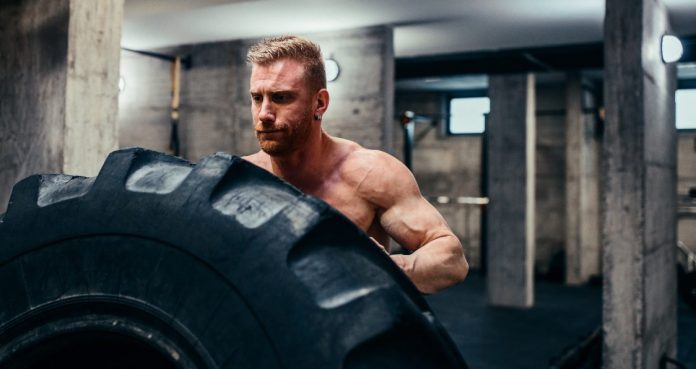
Why The Tire Flip Should Be In Your Training Program For The Ultimate Conditioning
Not for the faint of heart
Cardio, a dreaded word for many a’ bodybuilder. While the rest of the gym would rather be biking, on the treadmill, or rowing, we’d rather be lifting some heavy ass weights. The meat and potatoes baby, that’s for me. Well lament no more; there’s a way to develop your cardiovascular system while still giving you that muscle tingling action you crave, it’s called the tire flip, and its been waiting for you your whole life.
What’s great about the tire flip, is that it not only gets you more shredded than the statue of David but it also builds fast twitch muscles which is great for competition.
When you train with tires you want to do this in intervals. High intensity should be done in rounds with time periods of rest interspersed between high-intensity activity. While measuring your heart rate is a great way to keep track of how the exercise is effecting your body, you also want to keep into account your age and general health.
Now that you have the basics, without further ado we present to you 3 exercises that look way cooler than anything you can do on a treadmill.
Sledge Hammer Smash
[embedded content]
The sledgehammer smash is a fun exercise. Not only do you get to act beastly but sculpt a beastly form in the process. You can do a straight up and down movement, like displayed in the video above, or you can swing it overhead each time for a more powerful and home run hitting strength. Start at 30 seconds with 10 seconds rest, then increase in 15 second intervals.
The Flip
[embedded content]
While it may not seem like rocket science this exercise is more involved than you think. We’ve attached some tips with the correct way to do this exercise without sustaining an injury. While you don’t have to do 950lbs like Mr. Poundstone here, you definitely want to challenge yourself on this one.
Begin by gripping the bottom of the tire on the tread, and position your feet back a bit. Your chest should be driving into the tire.
To lift the tire, extend through the hips, knees, and ankles, driving into the tire and up.
As the tire reaches a 45 degree angle, step forward and drive a knee into the tire. As you do so adjust your grip to the upper portion of the tire and push it forward as hard as possible to complete the turn. Repeat as necessary.
???
The third exercise comes from you. We want you to use the tire for your next cardio workout and discover an exercise that works for you. Creativity is LYFE, and we encourage you to flex that muscle religiously.
Try the above exercise and hit us up in the comment section with a cool circuit you’ve discovered or your mysterious 3rd exercise.
Have you ever done the tire flip?
Let us know by hitting up our comments below or head on over to our official Facebook and Twitter.
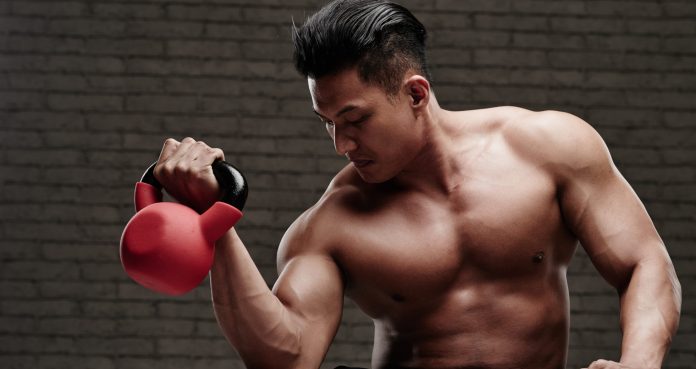
Top Benefits Of Kettlebell Training & Why You Should Use Them
Kettlebells are great exercise tools to enhance strength and really see those gains come to life.
With so many exercises and machines to try, our potential for growth is very much doable. Often times knowing the right workouts to do can be overwhelming, but taking a step back and prioritizing just what our goals are is important to understand what we need out of our own training. For some of us, the best training comes from simple and convenient pieces of exercise equipment. This is where a kettlebell can greatly enhance our gains and kettlebell training is a perfect way to enhance our health and fitness.
Working many muscle groups in a highly effective way, kettlebells are sure to offer a variety of exercises to enhance growth in multiple areas. With an increased effort to provide workouts and classes, kettlebells have become the focus of many trainers as they seek the best for their clients to improve all aspects of their training.
Let’s take a closer look at what kettlebells are, the benefits surrounding them, and great workouts to enhance all aspects of your training and performance. You won’t be disappointed by what you find from kettlebell training.
What Is A Kettlebell?
A kettlebell is a round free weight with a flat bottom and rounded handle for enhanced grip which is beneficial for a number of exercises. Similar to a dumbbell, it can used in a variety of ways for great variations to your workouts. The center of mass extends from the handle which gives kettlebells the opportunity to be swung, pressed, curled, held, and moved in a number of ways.
Many kettlebell companies will advertise their products as perfectly balanced, which is important for these movements to offer you better balance and grip for safety and a more advanced and effective workout.
Benefits Of Kettlebell Training
Full Body Workout
Kettlebells offer the chance to get a full body workout for strength, endurance, and flexibility by being versatile for a number of workouts. Anything from deadlifts, lunges, and swings can work multiple muscles and greatly improve muscle growth and weight loss (1).
Promote Strength & Power
With kettlebell training, your chances at lean muscle mass and power greatly increase by performing higher reps at a more intense pace. Instead of seriously bulking up by doing big lifts, kettlebell training can really grow that lean muscle mass to give you that shredded physique to make your muscles pop. With this more intense style of training, your power output will increase as well to give you better effectiveness for those power driven sports (2).
Improved Balance, Stability, and Coordination
By working your core and forcing you to stay engaged and upright, kettlebell training can improve balance, stability, and coordination. These workouts force you to stay grounded in a solid, athletic position which makes you focus on form and enhance mind-muscle connection to work those deeper muscles and smaller stabilizer muscles that are great for enhancing strength and balance (3).
Simple & Convenient
Kettlebells are simple and convenient exercise tools to use, requiring no change in weights and less time sifting through to find the appropriate weight to use. As you increase muscle mass, you can work your way up to heavier kettlebells and more advanced workouts, only enhancing the above benefits even more.
Great Kettlebell Workouts
Deadlift
Kettlebell deadlifts are great variations of a traditional barbell deadlift and allows you to build strength and muscular endurance without the hassle of a barbell. Great for targeting the hamstrings, glutes, calves, and quads, this will also strengthen your core to help your lower back for support. These allow you to use heavier weight and can help with form for other lifts. By keeping your back in an isometric position, it will improve posture by not changing the length of the muscle after contraction.
Lunges
Using kettlebells along with your lunge exercise will offer the same benefits of a lunge while also allowing you to comfortably add weight for increased growth. These will work your core and back muscles, as well as many lower body groups like your quads, hamstrings, and glutes. Building not only size and strength, kettlebell lunges can work for weight loss and balance as well.
Swings
Kettlebell swings are a solid way to boost cardio while aiding in strength, weight loss, and better posture. A total full body workout, kettlebell swings work your lower body muscles (quads, hamstrings, and glutes), upper body muscles (lats, shoulders, and arms), and your core. This exercise will give you a great boost and as you grow stronger, you will notice a serious change in weight used for your desired kettlebell.
Featured Kettlebells
Onnit Kettlebells
Onnit Kettlebells are high quality and versatile fitness tools from a reputable and great company in Onnit. Designed with a gravity cast for consistency and durability, it is accompanied by a powder finish grip for decreased slippage and more efficient workouts. Color coded by weight, these kettlebells provide for easy accessibility and are great for increasing explosive power, strength, and endurance.
Prices vary depending on the weight of kettlebell but there 8 options to choose from ranging from 13 lbs. ($22.95) to 70 lbs. ($114.95).
Check out our individual review for Onnit Kettlebells here. Also, check out Onnit Primal Kettlebells here!
Kettlebell Kings Kettlebells
Kettlebell Kings Kettlebells are perfect for enhancing grip and working with versatility as well for your desired strength and conditioning goals. Made from cast iron and covered with a powder coating, these offer overall protection and durability to enhance longevity. The structural integrity of these kettlebells will support your own growth and keep you operating at a high level.
Prices vary depending on weight but there are 21 options to choose from ranging from 9 lbs. ($69.99) to 203 lbs. ($424.99).
Check out our individual review for Kettlebell Kings Kettlebell here!
Wrap Up
Kettlebell training is a great way to change up your routine to see desired growth and everything you want out of your training. By increasing strength and size, promoting weight loss, working on balance and stability, and aiding in better posture, kettlebells have grown in popularity and for good reason. A great addition to your home gym, kettlebells will surely fire you up on all cylinders and work to benefit your health and fitness greatly.
Let us know what you think in the comments below. Also, be sure to follow Generation Iron on Facebook, Twitter, and Instagram.
*Images courtesy of Onnit, Kettlebell Kings, & Envato
References
Kravitz, Len. “Kettlebell Research Update”. (source)
Beardsley, Chris; Contreras, Bret (2014). “The Role of Kettlebell in Strength and Conditioning: A Review of the Literature”. (source)
Jay, Kenneth; Jakobsen, Markus D.; Sundstrup, Emil; Skotte, Jorgen H.; et al. (2013). “Effects of Kettlebell Training on Postural Coordination and Jump Performance: A Randomized Controlled Trial”. (source)

3 Recovery Basics For Hard Lifters
There are some easy ways to recover after a hard workout!
We all want to look like epic Greek statues. The kind of physique that can hold it’s own in a colosseum. Interestingly though, the best physiques aren’t made solely from lifting hard and pushing your limits. You also need a recovery component.
In fact, all the training you do means nothing if you can’t recover from it. There’s something to be said about working hard, but don’t forget about resting hard.
Ultimately, when you train, you have to provide a strong enough stimulus or signal for your body to change and adapt. To provide that signal, your training has to be hard and with hard training comes fatigue. Fatigue prevents you from training hard again, so the quicker you can get fatigue to disappear, the sooner and more productive your next training session will be allowing you perform better and thus, continue sending that sweet stimulus that enhances your physique.
Without this emphasis on recovery, you’re training hard for the sake of training hard without providing further growth. It’s like when you read a book when you’re tired. You might get through pages of pages of words, but not actually attain anything from the text.
But anyways, here’s how you recover like a champ.
Sleep Your Face Off
Sleep is responsible for hormonal production and exercise recovery. Sleep also keeps your brain sharp especially if you have to work a high-stress job on top of doing complex exercises at the gym. Sleep also predicts how cranky you are as human. It doesn’t even take any studies to know that.
Poor sleep hygiene is also linked with more illness. Inflammatory markers and stress hormones skyrocket making you sick and preventing proper repair of muscle tissue. With less sleep, you’re also immediately at a greater risk for heart disease, stroke, high blood pressure, and cognitive decline. So, it be a shame to work so hard in the gym for many of those benefits to be negated or worse, an early death. Just being real.
So if it’s not blunt enough for you yet, your biology is designed to rest within a certain cycle, not stay up scrolling on Instagram for hours.
The general recommendations for athletes is 7-9 hours of high quality rest. This allows you to get plenty of REM and Non-REM sleep.
Non-REM (rapid eye movement) sleep is deep sleep where your brain has low activity. Relaxation is high and body structures are repaired. This is where lots of muscle and bone repair takes place.
REM (rapid eye movement) sleep is where your brain has higher levels of activities. Vivid dreams tend to happen as the brain is providing energy to restore your brain.
Both stages are important and your body will switch back and forth between them, so it’s essential to get as much sleep as you can especially if you’re somebody who lifts hard.
If you’re struggling with sleep deprivation, here are some simple yet highly effective tips for you:
Keep a consistent sleep schedule
Create a good sleep environment with silence, darkness, and comfortable bedding
Exercise daily and get a little sunlight during the day
Have a relaxing ritual before bed especially if you workout late at night or are prone to excessive device usage
Minimize caffeine or alcohol consumption especially near bedtime
Eat Like a Champ
Food serves many purposes in your life, but one of the most important is that it’s fuel. It’s quite literally the nutrients and building blocks for your entire system, not just your muscle. You can’t produce strength or even get up in the morning to go pee without endless enzymes, nutrients, and transmitters doing their job.
This all requires food, so feed your body well. Most meatheads already know to consume lots of protein. This is the bare basic that will skyrocket your recovery game if you’re more of a novice. Be sure to consume at least 0.8 grams per pound of bodyweight each day of protein. Going for gram 1 gram per pound of bodyweight is a safe and simple target for many people.
Protein will build muscle, repair tissues, and improve sleep which we discussed is great for your recovery.
Beyond protein intake, you’ll need a high enough caloric intake. Protein alone is only one macronutrient. You’ll need carbs for serotonin production and fat for testosterone production. More importantly, all three of these nutrients provide calories which is the basic unit of energy. You need calories to maintain tissue and provide literal energy for all the processes in your body.
Many lifters especially females tend to live year-round in a state of chronic dieting, chasing abs, and being overly restrictive. Your best training recovery comes from more calories not less. Gladiators don’t look and perform the way they do because they eat like rabbits.
So be sure to eat a sufficient amount of calories year-round. Bulking is great to have extra calories. Dieting down is fine too, but make sure you do it slowly to prevent crash dieting with insufficiently low calories.
Beyond the basics of macros, nearly every micronutrient plays some direct or indirect role in exercise recovery. So foods like pizza and churros are great for brining calories up, but they’re piss poor at providing appreciable vitamins and minerals.
I’m not saying pizza and churros are bad for you. Heck, I can kill a whole pizza and all the churros you give me, but the majority of your diet during the week should consist of whole nutritious foods. Excessive processing especially when nutrients aren’t refortified causes food to lose nutrients.
A multi-vitamin can be a decent insurance policy, but many are quite poor in design and they don’t provide key compounds only found in whole foods. So be sure each meal has a lean protein and a vegetable if you can. Also, eat plenty of fruits, legumes, nuts, and grains. You feed your body well and it will recover well. It’s not rocket science, but the simplicity of this message is often lost in our world where people adore overcomplicating things.
Monitor Your Training Program Meticulously
Recovery is by definition, a return to baseline. This means your performance needs to come back. Let me explain. If you did 3 sets of 12 with 155 lbs while training close to failure, you will accumulate fatigue.
That fatigue needs to dissipate before you’re able to hit 3 sets of 12 with 155 lbs again. This is why tracking your performance is so important. It allows you to objectively understand how much training you can handle before that exercise is repeated.
One of the most underrated ways to recover better is to train better. If your training is excessive, no recovery tactic can help with that. Thus, you need your training program to have a good balance of volume, frequency, and proximity to failure.
The closer you train to failure and the more sets you do, the more fatigue you’ll accumulate. So, if performance is dropping too often especially even after deloads, you need to do fewer sets to failure or do fewer sets period.
Beyond adjusting your training, you can also incorporate deloads to recovery better. Deloads can be pre-emptive or auto regulated. This means, you can deload once you’re starting to feel drained from training despite no drop in performance or you can deload at the first evidence of performance decline.
Either is fine, but what’s important is the deload is a temporary drop in training volume to allow for fatigue to dissipate. Usually advanced lifters will have to deload every few months.
Lastly, the low hanging fruit I see in recovering better with your training is to optimize exercise selection.
You’re essentially trying to recover from the fatigue imposed on your body. Without this fatigue, you could train forever and grow to Hulk status by next week. Unfortunately fatigue is inevitable, so the best we can do is minimize it with good exercise selection.
This means choosing exercises that stress muscle tissue to trigger hypertrophy that minimally fatigue us.
Believe it or not, this usually means cutting out barbell exercises for db, cables, or machine variations. The latter builds comparable or more muscle, but at a fraction of the fatigue. Think about how you feel just after 2 sets of barbell back squats or conventional deadlifts. Your low back is torched and your joints are more inflamed than a shin getting hit with a scooter.
So in the words of Lee Haney, “stimulate, not annihilate.”
Recovery is The Way
Training only has meaning if you can recover from it. If you can’t recover properly, you’re collecting fatigue, skyrocketing muscle loss, and getting tired with no results to show. So lame right?
So sleep hard, eat like a champ, and meticulously monitor your training. More isn’t always better. Being perpetually tired isn’t always better. And busting your balls trying to power through clear performance declines is stupid.
Learn to rest and recover, so you can make gains.
For more news and updates, follow Generation Iron on Facebook, Twitter, and Instagram.
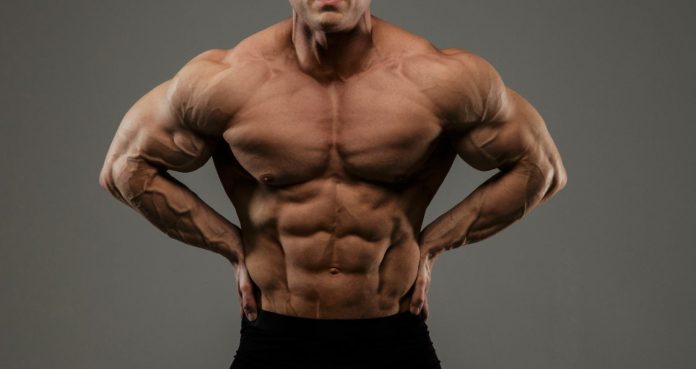
5 Bodyweight Exercises to Build a Ripped Chest
Build a Shredded Chest with these Bodyweight Exercises
A broad and muscular chest has been the symbol of masculinity for a long time. Most people think benching heavy weights is the only way to build a chiseled chest. This is as far away from the truth as it can be.
Your body doesn’t know how much weight you’ve loaded onto the bar. All it knows is the amount of muscle fiber recruitment and tension placed upon it. Calisthenics athletes are a great example of using your own bodyweight to build a ripped chest.
Parallel Bar Dips
Parallel bar dips are a bad-ass exercise and will fill up your pecs with blood and lactic acid. We prefer the parallel bar dips over the bench dips as your lower body weight adds resistance in the bar dips whereas the bench dips take it off.
While performing the parallel bar dips make sure you bend forward a little as it will put more tension on your pectoral muscles and will eliminate the recruitment of the triceps. Maintaining a full range of motion in the bodyweight exercises is critical for the development of the muscles.
Barbell Rollout Flyes
Barbell rollout flyes aren’t for the faint-hearted. The rollout flyes are for the advanced lifters and include the use of a couple of barbells and weight plates. Don’t worry, you won’t have to lift any of it.
Get into the push-up position and place a barbell at each side, so one end of the barbells are next to your feet and the other is next to your shoulders. Grab the barbells at the start of the grip area and push them apart so your chest is almost touching the floor. Pull the barbells to the starting position where they should be under your shoulders and squeeze your pecs.
Push-Ups (Different Variations)
There are enough pushup variations that you can try a new one in every workout for months. Pushups are one of the basic functional exercises and are one of the first exercises people learn to perform.
You can perform the incline pushups if you want to train your upper pecs, decline pushups for the lower chest, normal pushups for the middle and overall chest mass. Advance forms include superman pushups, clap pushups, one-hand pushups etc.
Resistance Bands or TRX Flyes/Presses
TRX and resistance band flyes and presses are isolation exercises which can target the pecs from specific angles. Resistance bands are incredibly portable and can be taken along in a backpack or a suitcase while you’re traveling.
You can decrease the resistance on the bands by holding them close to the bottom or add resistance by grabbing the bands farther away from the ends. Tie the bands to a straight pole or hang them from a bar near the ceiling if you don’t have an access to a gym.
Isometric Exercises
Isometric exercises are one of the most underutilized exercises and don’t get their fair share of credit when it comes to building muscle mass and definition. The isometric exercises are a great way of building a mind-muscle connection. If done at the end of a workout isometric exercises can give you a muscle-ripping pump.
Isometric exercises are a type of strength training in which the joint angle and muscle length don’t change during contraction. Isometrics are done in static positions, rather than being dynamic through a range of motion.
Which is your favorite bodyweight chest exercise? Let us know in the comments below. Also, be sure to follow Generation Iron on Facebook and Twitter.
*Header image courtesy of Envato Elements.
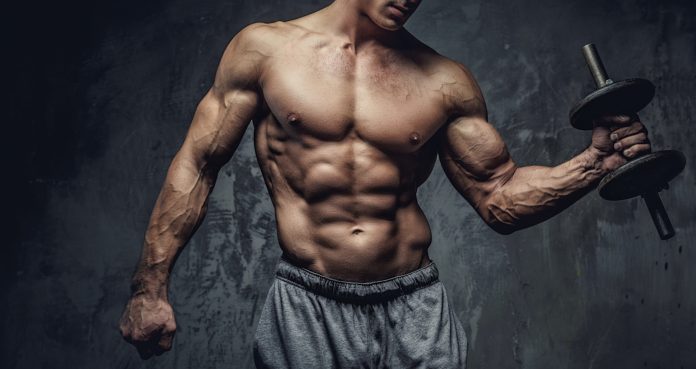
This is How Your Training Should Change as You Get Advanced
How to Take Your Workouts to the Next Level
Sticking with the same training program for a long time is a sure shot way of hitting a plateau and stalling your gains. To get the most out of your workouts, your training techniques should develop and advance with you.
Improving your physique with every passing year is a constant quest for which you’ll have to work hard. Shocking your muscles is the only way to make them grow. If you follow the same training program in every workout, your muscles can get used to them and will refuse to grow.
Advanced Training Techniques
Advanced training techniques like the super, drop, giant, rest-pause sets, forces, cheat, 21 reps are a great way to shock your muscles and force them into growing. As you get advanced, you’ll have to be on the lookout for how to make your workouts harder.
Bodybuilders are always chasing the pump and you should be willing to leave your comfort zone and try new things. Changing the rep tempos and increasing the time under tension can do wonders for your muscle growth.
New Training Equipment
Use of new training equipment can be instrumental in sparking new muscle growth. Using an arm blaster, fat grips for your arm workouts, elastic bands for supersets or adding resistance, or using assistance tools like slingshots, knee, elbow sleeves can take your workouts to a whole new level.
If you have been working out at the same gym for a year or two, your body might get familiar with the machines. Changing gyms can help ignite muscle gains as the ergonomics of the machines will be new for your body.
Change Training Splits
Switching up your training days can be a good idea. If you train your chest on the international chest day, i.e. Monday, move it to the end of the week. Doing this can keep your muscles guessing.
You could also train two muscles groups in a single workout. Training two muscles in a single day allow you to train one muscle group twice a week which is a great way of bringing up lagging muscles.
Start a New Training Program
You’ll know your body is adapting to your training program when you stop getting a pump and see no positive changes in your muscles. Every training program intends to develop your muscles by following certain principles.
You can’t follow the same training program for building muscle, losing fat or toning your muscles and expect to see results. Make sure you don’t jump the gun and start an advanced program if you’re a beginner.
Time
As you advance in your training, the time you spend in the gym shouldn’t increase. Most people think spending more time training will get them better results. Your muscles don’t grow while you’re working out, they develop when you’re resting and are following a diet.
Incorporate advanced training techniques and make your workouts more intense so you can get a lot done in one hour at the gym. After the one hour mark, the time you spend in the gym will be inversely proportional to the effectiveness of your workout. Most people will do better by keeping their workouts short, intense and explosive.
When did you start training? Let us know in the comments below. Also, be sure to follow Generation Iron on Facebook and Twitter.
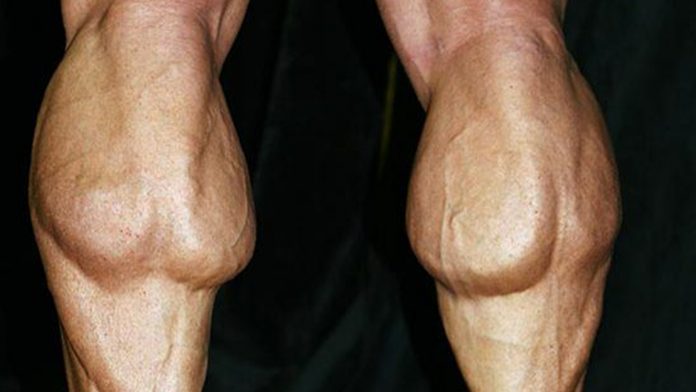
Why Your Calves Aren’t Growing And How You Can Fix Them
Calves lagging behind? Here’s how to power through.
One of the most complained about muscles are the calf muscles. Men (and women) everywhere lament at the work they’ve put in with less than ideal results when it comes to the calf muscle. While genetics play a large factor in how your muscles will show up, there are certain things you can do enhance what you’ve already got.
One of the most basics concepts you need to learn…is more! While body weight training can definitely keep your muscles pumped and fairy toned, for calves that really pop you’re going to need more. But what does that mean exactly, more reps? more weight? well both of these are true…to a point.
Weight
As far as weight is concerned, you definitely want more of that. Body weight isn’t going to provide the necessary resistance needed to break down muscle, causing it to recover stronger. Next time you’re doing your seated calve raises try throwing some more weight on there. You can use a traditional machine or try it using dumbbells for an alternate variation.
Reps
When it comes to reps, you’ve got to find that perfect balance. While you don’t necessarily need to be doing a hundred reps as you would with bodyweight, you also don’t want to be only doing 4 or 5. If you can do heavy weight for as many as 25 reps per set then you’re in the sweet spot range. As with anything, feel free to tweak the rep ranges depending on your ability and goals.
Contraction
This one really hit home for me as I was working on my chest. Jay Cutler always goes on about concentrating on the muscle when you’re hitting your pecs and I thought it was all hocus pocus. I was wrong.
Concentrating on the contraction of any muscles while performing an exercise not only brings more blood to the muscle but also eliminates useless movement. Perform your calf raises in a controlled manner, when you get to the top make sure to squeeze for extra emphasis.
On the way down you also want to concentrate the negative portion of the exercise as putting the weight back down in a controlled manner is the other 50% of your TUT (time under tension. Don’t cheat yourself, treat yourself.
Extra Calf Day
Why not? If your muscles can handle the extra day and you’ve been giving your body accurate rest, then top off those calves with an extra day. Most people work their calves during leg day, which is fine.
But you have to remember your calves are tired from doing other exercises (squats, deadlifts, leg curls, etc.), having a separate day lets you attack them while they’re fresh. This leads to more output and hopefully greater gains.
While all these tips can help get you the swollen calves you want and deserve, you’ve got to have your core principles in check. This means your sleep and nutrition. Without adequate rest and nutrient dense foods you deplete your T-levels and in general reek havoc on your body.
So pay attention to both sides of the sport for healthy and positive gains. What are your problem areas? Let us know by hitting up our comments below or head on over to our official Facebook and Twitter.
*Header image courtesy of Envato Elements.

Do Pull Ups Before Every Workout For Killer Arms
Start strong, end even stronger!
So it’s arm day. You’re going to do your usual workout, on your usual machines, with your usual enthusiasm, “This is hard but bearable, at least I can maintain”. But for those of you who are awake, or just tired of being asleep, we’ve got a quick fix to terrorize your arm day, and give it that well needed jolt it deserves.
The secret we are sharing here is to perform pullups before any other exercise during arm day. This will surely fire up those biceps, but also work to target other muscle groups to give you a well-rounded warmup and pump all at once. For those skeptical, this training program can be a game changer if you open your mind to it and commit to seeing big gains.
The program is broken into two sections, “A”, and “B”, and you attach it to the beginning of your arm day workout. Alternate days according to your workout. By following this instructions, you will really start to see great gains and something you can be proud of.
Program A: Do 50 pull-ups as fast as you can (strict as possible)
Program B: Do as many pull-ups as you can within 10 minutes
The Breakdown
While the workout is fairly straightforward there are common pitfalls you can make. Many builders get too overzealous and go too hard in the beginning. While this is admiral, the guts and glory approach can leave you with nothing in the tank to finish the set. You want to leave at least two bullets (pull-ups) in the chamber in order to get to your goal. Longevity is key here.
Another common mistake is staying with one grip. You can switch up grips as much as you’d like for this exercise and we recommend that you do. If you’re a pull-up God then go for it, bust out 50 under hands, strict.
For the rest of us, alternate your grip between underhand (biceps), neutral (palms facing each other; brachialis), and pronated (palms facing away from you: corachobrachialis).
You can also alternate between hand placements. Wide grip emphasize the shoulders as well as other back muscle, while the close grip involve the biceps more as they are in line with the shoulders, giving them slightly more stability.
If you’re feeling really froggy, try extreme close grips (triceps) or extreme wide grips to (traps) to really give you that superman feel. *Plus they look pretty cool when you’re doing them on the bar*
Note: This exercise tend to work best with builders who can do at least 8-10 strict pull-ups, so if you’re not there yet, you might want to concentrate on those first. If you’re doing 10-15 strict pull-ups or more you might want to add weight to get you to the 8-10 range. This will give you the endurance and strength gains you’re looking for.
Wrap Up
To be honest you can add this to the beginning or end of any upper body workout as it hits your lats, biceps, and shoulders in many different ways. Pullups are a great exercise to promote all sorts of crazy benefits especially when it comes to overall strength and added support. For whatever your respective sport may be, definitely consider adding pullups to your training program before arm day to enhance that much desired growth. Make this change and you won’t be disappointed with the results.
Let us know what you think in the comments below. Also, be sure to follow Generation Iron on Facebook, Twitter, and Instagram.
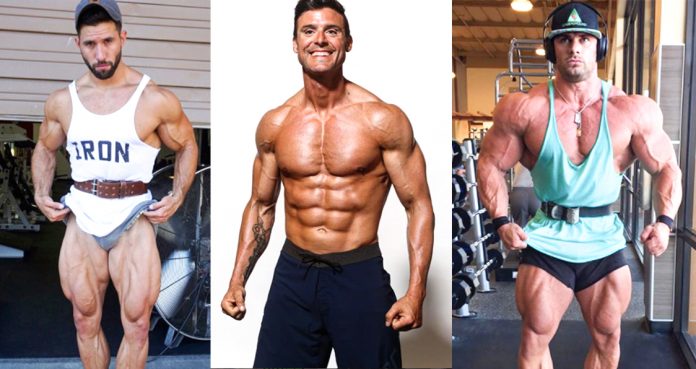
Best Male Fitness Athletes You Need To Follow on Instagram
Follow These Fitness Stars on Instagram
Instagram has become the go-to place for fitness enthusiasts to follow the best in the business. The sudden blowing up of the fitness scene on Instagram has given rise to some pseudo fitness gurus whom you should stay away from.
Following the right people on Instagram can help you in achieving your goals by acting as a daily dose of motivation. Not to mention, you can learn a ton about fitness from these athletes and apply it to your training and nutrition.
Yesterday we covered the top female fitness athletes you should follow on Instagram. Today we’re jumping to the other side with the top male athletes on Instagram to follow. Check it out!
Steve Cook
Steve Cook is a veteran and had a decent fan following before Instagram was a thing. Steve is one of the most humble fitness personalities and shares not only his fitness routines but also his personal life with his fans.
Simeon Panda
Simeon Panda is an alien from another planet. Panda has insane muscle mass and definition. Simeon is also a part of many collaboration videos where he can be seen lifting heavy weights with complete ease.
Bradley Martyn
Bradley Martyn can lift an insane amount of weights with near perfect form. Martyn is famous for performing crazy stunts like performing squats on a hoverboard, jumping out of swimming pools, squatting with girls on the barbell, etc.
Ulisses Jr.
Ulisses Jr. has one of the most shredded physiques in the fitness industry. Ulisses maintains his peeled look throughout the year. If you’re into ripped physiques and long hair, Ulisses is a must follow.
Joey Swoll
Joey Swoll is a Shredz athlete and has been with the company for ages. Swoll is known for sharing heartfelt messages with his fans. Joey has a symmetrical physique with broad shoulders, tiny waist, and huge legs.
Blessing Awodibu
Bodybuilding isn’t supposed to be boring, and Awodibu is the perfect example of it. Awodibu is one of the funniest bodybuilders on Instagram. Blessing Awodibu is no joke, he is a Pro Bodybuilder and is a 2X Arnold champion.
Kris Gethin
Kris Gethin is a renowned fitness athlete who believes in mileage as he does in knowledge. Kris owns the band Kaged Muscle which proves his knowledge about diet and nutrition, and his physique is the result of the mileage in the gym.
Mike Rashid
Mike Rashid is much more than a shredded physique. Rashid believes in developing and training the mind as much as he believes in working on his physique. Mike has an entrepreneurial side and owns his own supplement and apparel brands.
Cory Gregory
Cory Gregory is the co-founder of MusclePharm and Max Effort. Gregory brought the “Squat Every Day” challenge to the limelight. Cory also gives the “Dad bod” a whole new meaning.
Who is your favorite male fitness athlete on Instagram? Let us know in the comments below. Also, be sure to follow Generation Iron on Facebook and Twitter.
*All images courtesy of Instagram
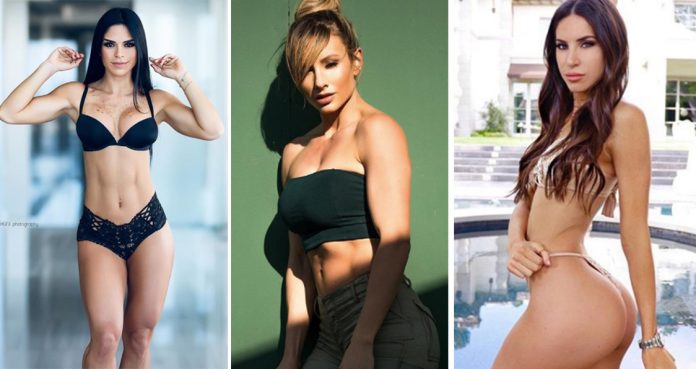
Best Female Fitness Athletes You Need To Follow on Instagram
Follow These Female Fitness Athletes on Instagram
Beautiful women are one of the biggest reasons for Instagram’s loyal user base. Many people check Instagram every once in a while just to see if their favorite chick has posted a new picture.
Female fitness athletes are much more than pretty faces. Fit chicks give out training, nutrition and lifestyle tips which can help women and men alike. These girls have also built a brand out of their Instagram accounts.
Paige Hathaway
Paige Hathaway is one of the prettiest girls on this list and arguably in the entire fitness industry. Hathaway is dedicated to helping people improves their physiques and runs a monthly transformation challenge to motivate them.
Ana Cheri
Ana Cheri is a Playboy Playmate turned fit chick. Cheri owns a gym with her husband and a swimwear brand. If you love women with an hourglass physique, following Ana on Instagram will be the best thing you’ll do today.
Michelle Lewin
Michelle Lewin has been on the fitness scene for a long time and is one of the most recognized personalities. Lewin doesn’t limit her workouts to the gym, and you can see her working out in the wild.
Alice Matos
Alice Matos is much more than a pretty face and a shredded physique. This Brazillian beauty has an entrepreneurial side and has turned her clothing brand into a global fashion label.
Courtney King
Courtney King is a 2X Ms. Bikini Olympia and knows her training well. King is complete wife material with some serious cooking skills. Courtney shares much more than belfies and will make you fall in love with her adorable self.
Ashley Horner
Ashley Horner is badass and her workouts are a proof of it. Horner is also the only mommy on this list. Ashley is a transformation expert and is a must follow for anyone looking to shake things up.
Nikki Blackketter
View this post on Instagram
A CHRISTMAS MIRACLE, I’m finally allowed to spill the beans on Nikki B Season 2 X @gymshark !!! We had SO much fun making this collection, it has a lot of elements from my first round, plus some more fun/lifestyle elements as well, which I’ll reveal very, very soon. ??? HOPE YALL ARE AS EXCITED AS I AM, bc we launching with a HUGE pop-up shop in Los Angeles, (third street promenade), January 6th & 7th!!! My heart is literally pounding typing this because I am filled with so much excitement and anticipation and I’ve been waiting SO LONG to tell you guys, haha. Please COME SEE ME there and grab some of the new swaggggg!!! LOVE YOU GAHHHHHHHHH #okayimdone #capslockneedstoberemovedfromme #swipeforthesneakpeeks #andthereswaymore #gonnabebest2018kickoffever #HYPENESSISTOOREAL #pineapplelife #NikkiBSeason2 *oh it’ll be available online sometime after pop-up, date not set yet
A post shared by Nikki Blackketter (@nikkiblackketter) on Dec 5, 2017 at 10:37am PST
Nikki Blackketter is a YouTuber with devoted followers. Blackketter is a Gymshark sponsored athlete and has 1.7 million followers on Instagram. Nikki is very honest with her followers and doesn’t hide anything.
Jen Selter
Jen Selter shook up the world with her belfies. Selter arguably has one of the best butts ? on Instagram and you’re missing out if you’re not already following her. Jen has made several television appearances promoting fitness.
Brooke Ence
Ence is the most shredded fitness athlete on this list. Brooke’s physique can put many serious lifters to shame. Ence is a CrossFitter and makes appearances as an Amazon warrior in the hit Wonder Women franchise.
Anllela Sagra
Anllela is a Colombian beauty with washboard abs. Sagra’s captivating face and physique can keep you hooked on her Instagram feed. Anllela frequently shares videos, pictures, and tips from her workouts.
Who is your favorite female fitness athlete? Let us know in the comments below. Also, be sure to follow Generation Iron on Facebook, Instagram and Twitter.
*Images courtesy of Instagram
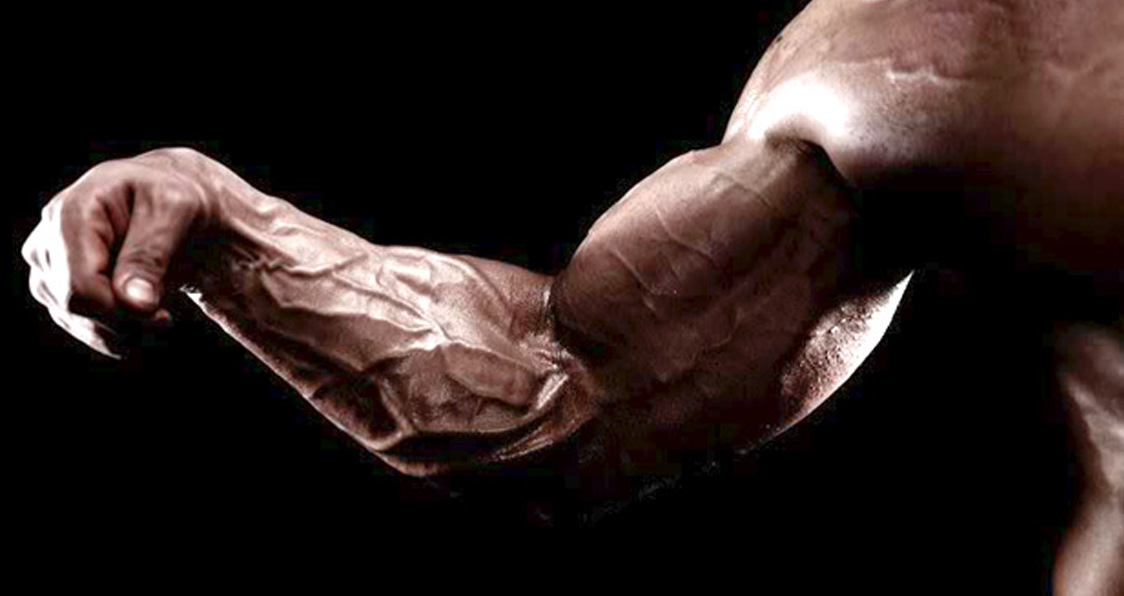
5 Best Exercises For Massive Forearms
Do These 5 Exercises For Big Forearms
Forearms are one of the most underrated muscle groups, and most people overlook training them. If you’re someone who prefers wearing t-shirts, your forearms are more exposed than your biceps, so why not try and give them the love they deserve. While people may not look directly at your forearms, a set of solid and strong forearms can add to your physique and make others certainly envy you.
Even if you’re someone who focuses on training forearms, they can be a challenging muscle group to build up. They are one of the top areas that people struggle with and often find themselves plateauing. We want to make sure we focus on those muscles that others envy. A common mistake is that there are only a few exercises to work your forearms. That is not true. Plenty of compound movements will give your forearms a burn so they grow. What you will find however is that there are certain exercises perfect for building and isolating your forearms, so they grow.
Muscle symmetry can add to your body aesthetics and can make your arms look bigger than they are. Training your forearms as accessory muscles isn’t enough to add muscle mass. You need to treat them as you would treat any other muscle group. As a bodybuilder, or someone seeking a well-rounded physique, don’t neglect a body part that is most visible most often. A set of forearms that will stand out and only add to your symmetry is exactly what you need to see the growth and overall gains you want most.
That’s why we’ve put together this list of the five best exercises for how to get bigger forearms. If done right, this will get you on the path to building massive forearms to be proud of. With the right approach and proper training, you will be well on your way to seeing effective gains all while giving your forearms the love they deserve.
Anatomy of the Forearms
Your forearms are made up of three muscles/ muscle groups, all working for their own benefit respectively. Your brachioradialis is the muscle that flexes the forearm at the elbow (1). Certain exercises like hammer curls are great for this muscle.
Your flexors are located on the posterior side of the forearm and are responsible for wrist extension, finger extension, and forearm supination, so turning your palm upward and outward. An exercise like the barbell wrist curl is a good one for flexors.
The extensor muscles are located on the anterior of the forearm and deal mainly with flexion and pronation, rotating your forearm so your palm is backwards and downwards. The dumbbell wrist extension exercise is a good exercise to perform for forearm growth.
Benefits Of Strong Forearms
Having strong forearms is important when it comes to those of us who lift for a number of reasons. They first provide for better grip strength and as we work up in weight, it is important for us to realize that we need to have a solid and secure grip so our gains never falter (2). They also provide for bicep stability and will work improve all those big lifts that deal with your biceps and other body parts. Plus, they will provide for a more rounded and symmetrical physique that others will definitely envy.
5 Best Exercises For Massive Forearms
As promised, we wanted to share the 5 best exercises for massive forearms. Knowing the right exercises and having the right approach to training will better prepare you to tackle any workout. While forearms tend to be overlooked, these exercises will give you great gains and make you see the progress you want most.
Let’s take a look at these best 5 forearm exercises so you can have the best for all your gains.
1. Barbell Wrist Curls
Barbell wrist curls are one of the most common forearm exercises and yet most people perform them incorrectly. Don’t let your ego get the better of you while doing this exercise and use weights you can maintain a full range of motion with. The barbell wrist curls work the brachioradialis and flexors.
The best way of performing the barbell or dumbbell wrist curls is to kneel down at the side of a flat bench with your forearms placed on the bench. Grab a barbell with an underhand grip and curl it as high as you can while lowering the barbell. Let the barbell roll down to the tip of your fingers. Doing so will help in recruiting all the muscle fibers in your forearms and hands.
2. Barbell Reverse Wrist Curls
Barbell reverse curls is another common forearm exercise but is a little harder as compared to the normal wrist curls. Use a wrist curl machine if you have access to it at your gym or use a flat bench.
You will be lifting lighter weights in this exercise as compared to the normal wrist curls. Grab the bar with an overhand monkey (thumbs over the barbell) grip. A monkey grip helps in better targeting your forearms better. The reverse wrist curls work the extensor muscles.
3. Behind the Back Cable Wrist Curls
Behind the back cable wrist curl is a great exercise to isolate your forearms. Using the cables will help you maintain a constant tension on your forearms and will fill your muscles with lactic acid.
Stand with your back towards the cable pulley machine and grab a straight bar. Curl the bar and hold the movement at the contraction for a couple of seconds. This exercise focuses on your brachioradialis and flexors.
4. Reverse Grip Barbell Curls
Reverse grip barbell curls are a compound exercise and will help you in developing muscle mass and strength in your forearms. Holding the barbell with an overhand monkey grip will make your forearms work harder to hold onto the bar.
Keep your elbows pinched to your sides and curl the barbell. Keep the reps slow and controlled and squeeze your forearms and biceps at the top of the movement. The reverse grip barbell curls work the extensors.
5. Farmer’s Walk
Farmer’s walk helps in building forearm size and grip strength which can carry over to other exercises. The farmer’s walk is also one of the easiest exercises to perform. Grab a pair of dumbbells and walk around until you can’t hold onto the dumbbells anymore.
Another variation of this exercise is the pinch carries. In pinch carriers, you need to pinch together two plates so they don’t slip. Pinch carries activate your forearms by forcing you to squeeze your fingers so the plates don’t separate.
Recommended Forearms Workout
With so many workouts out there, finding a good forearms workout may be challenging. We wanted to share a great one with you so you can tackle your arm goals with no problem.
Exercises
Sets
Reps
Barbell Wrist Curls
3
15
Barbell Reverse Wrist Curls
3
15
Behind The Back Cable Wrist Curls
3
12
Reverse Grip Barbell Curls
3
12
Farmer’s Walk
2
1 minute
Tip: Use a Thick Bar or Fat Gripz
Another way for how to get bigger forearms is to increase the muscle fiber recruitment of the forearm muscles and grip is to use a thicker bar. Conventional barbells and dumbbells have one-inch handles, but you can use thicker bars to make the forearms work harder. Thicker bars also provide a greater stimulus for your forearms to grow stronger and larger. It would be worth trying this out for you will get great benefits that can work towards your goals with a solid bar.
Supplements For Bigger Forearms
When looking to enhance forearm growth, looking to the right supplements will prove to be worthwhile for growth and recovery. A solid pre-workout can work to provide energy and push past fatigue while also aiding in increased blood flow so your forearm muscles really start to grow. On top of that, a protein supplement for those post-workout gains will work to boost protein synthesis and allow those muscle tears to heal producing more muscle. Creatine is also great for increasing strength and size and for those really looking to put on mass and muscle, a mass gainer is a great option to advance your gains.
Wrap Up
Getting bigger forearms can make those arms of yours truly pop. How to get bigger forearms may seem challenging, but with this workout and some great supplements, you are well on your way to making that happen. Don’t neglect your forearms and give yourself the best chance at overall success by putting these 5 best exercises for massive forearms into your routine.
Let us know what you think in the comments below. Also, be sure to follow Generation Iron on Facebook, Twitter, and Instagram.
*Images courtesy of Envato
References
Mitchell, B.; et al. (2021). “Anatomy, Shoulder and Upper Limb, Forearm Muscles”. (source)
Szymanski, D.; et al. (2004). “Effect of 12 Weeks of Wrist and Forearm Training on High School Baseball Players”. (source)
